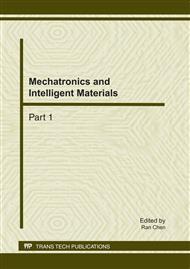p.6
p.11
p.16
p.21
p.26
p.31
p.36
p.40
p.48
Theoretical Analysis and Experimental Investigations of the Frictional Wear Characteristics of Nanometric Zirconia Ceramics
Abstract:
This study was focused on the theoretical analysis and experimental investigations about the frictional wear of nanometric zirconia dental ceramics. An MRH-3 digital-display high-speed ring-on-block tribometer was used for frictional wear experiments. A PGI800 coarseness profiling instrument was used to test the width and the length of the grinding defects on specimen surfaces. An S-3500N SEM was employed in the microscopic observation of the surface morphology after the abrasion. Results indicated that the frictional factor and the wear rate of nanometric ZrO2 ceramics decreased significantly under identical working and frictional conditions compared with ZrO2. The wear mechanism of nanometric ZrO2 ceramics was micromachining and plastic deformation while the wearing mechanism of ZrO2 ceramics was brittle fracture and abrasive wear.
Info:
Periodical:
Pages:
26-30
Citation:
Online since:
February 2011
Authors:
Price:
Сopyright:
© 2011 Trans Tech Publications Ltd. All Rights Reserved
Share:
Citation:


